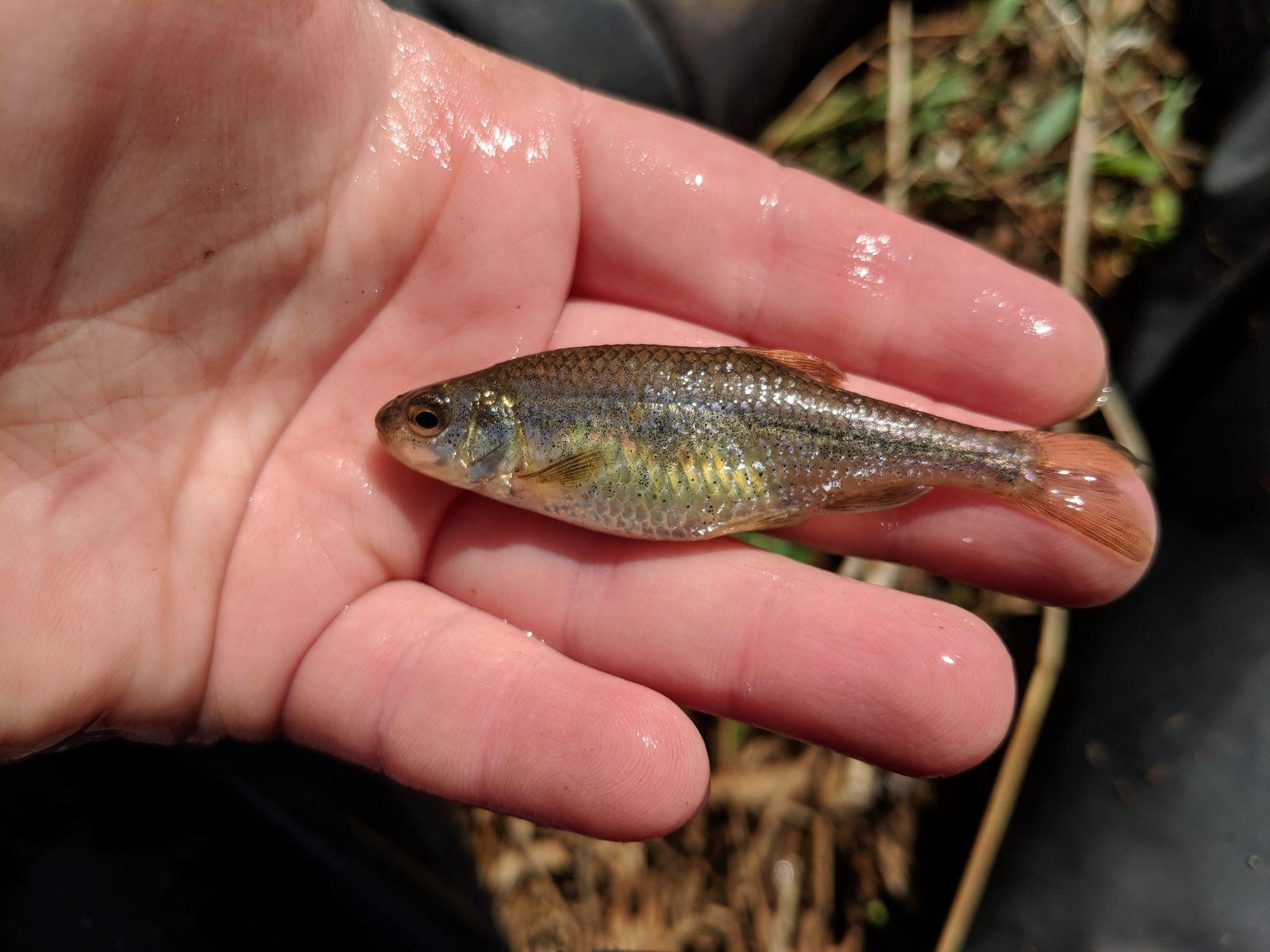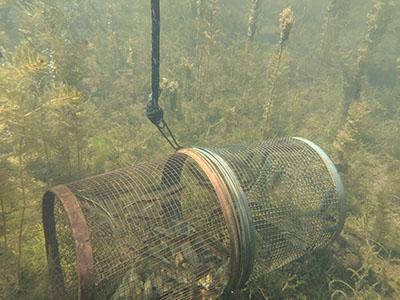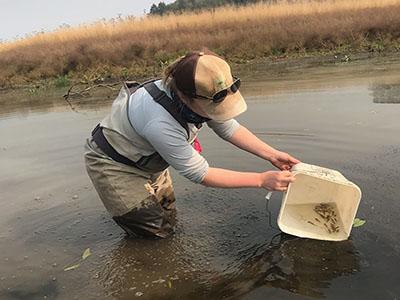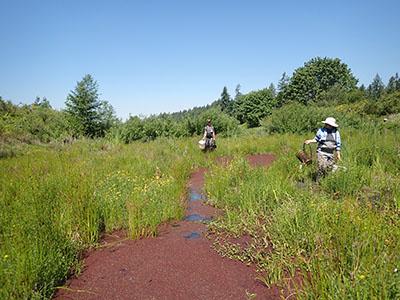Oregon Chub
Oregon Chub Research, Monitoring, and Conservation
The Oregon Chub (Oregonichthys crameri) is a small cyprinid minnow endemic to the Willamette River drainage of western Oregon. In 1993, the Oregon Chub was listed as Endangered under the federal Endangered Species Act due to extensive habitat loss, curtailed distribution, and predation by nonnative species. Since listing, ODFW has worked in collaboration with federal agencies, private landowners, and other organizations to protect this unique fish. Conservation activites to suppor Oregon Chub include long-term habitat protection and restoration, improved in-stream flow management, the establishment of new populations via translocation, and the discovery of previously undocumented populations. As a result of these efforts, the USFWS downlisted the Oregon Chub to Threatened in 2010, and in 2015 the species became the first fish to be removed from the Endangered Species List due to recovery.
As Oregon Chub moved towards delisting, a post-delisting monitoring (PDM) plan was developed to ensure that this species remains stable or improving once the protections of the ESA were removed. This 9-year plan (2015-2023) focuses on monitoring in three recovery areas: the Santiam, the Mainstem Willamette, and the Middle Fork Willamette. Monitoring activities include presence/absence surveys for Oregon Chub throughout their historical range, abundance estimation at a subset of sites, presence/absence surveys for nonnative species that may impact Oregon Chub, and habitat monitoring. In addition to post-delisting monitoring, we are also studying the influence of dam operations (US Army Corps of Engineers – Upper Willamette Project) on Oregon Chub, other floodplain fishes, and their habitats.
In 2021, the seventh year of the post-delisting monitoring period, we identified 131 known Oregon Chub populations, of which 100 were naturally occurring and 31 were introduced. Abundance estimates and population distribution in 2021 exceeded the post de-listing monitoring criteria and suggest continued stability for Oregon Chub rangewide. The current distribution and abundance of nonnative fishes in 2021 were below the recovery criteria thresholds that would trigger additional management actions. In 2022 monitoring efforts will focus on populations in the Mainstem Willamette.
For More information
Project Contact: Matt Collver
Recent Reports:
- ODFW. 2021. Biological Review, occupancy and abundance, and sampling considerations for Umpqua Chub status and trend monitoring. Oregon Department of Fish and Wildlife Science Bulletin 2021-01, Salem, OR.
- Collver, MS, AA Anderson, BL Bangs, and AS Harrison. 2020. 2019 Oregon Chub Investigations. ODFW Progress Reports.
- Bangs, Brian L., Matthew S. Collver, and Michael H. Meeuwig. 2019. 2018 Oregon Chub investigations. ODFW Progress Reports.

The Oregon Chub
This small minnow species enjoys backwater sloughs, ponds, and slow moving off-channel habitats in the Willamette Valley.

Mark Recapture Estimates
On the Oregon Chub Project, we use minnow traps to capture Chub and other fish species. Traps are deployed for 4-24 hrs. Following the "soak" time, we empty the fish we have captured into buckets that are oxygenated using battery powered air stones. We thencount and record what we caught, mark the fish by taking a small clip of their tail fin, and release the fish back where they were captured.

Releasing Marked Fish
Once we have marked fish during the initial capture, we release them back into the environment. We give them time to disperse throughout the population and prepare for the next phase of the process recapture.

Recapture
After fish are released at a site, we set the traps again. After we collect the traps a second time, we record how many of the fish are marked and how many are unmarked. The ratio of marked to unmarked fish allows us to infer a population estimate for that location.
Sampling From Boats
Since Chub occupy a variety of habitats, we use use several techniques to reach them for monitoring. While some areas can be accessed on foot, we also use boats to access some sites.

20 Years of Monitoring Data
The long-term monitoring data collected for this project shows how dramatically the number of Oregon Chub populations has increased over time. The number of populations continues to rise, through conservation translocations, natural recolonization of habitats, and the discovery of previously undocumented areas where Oregon Chub occur.
